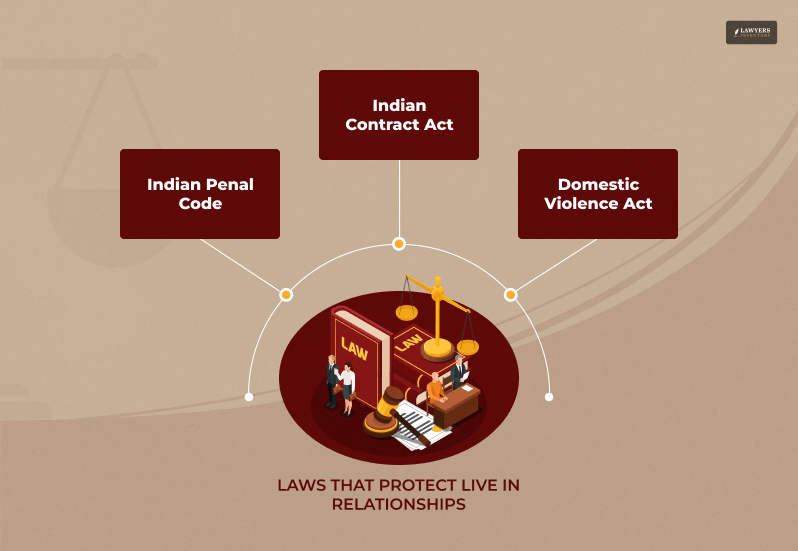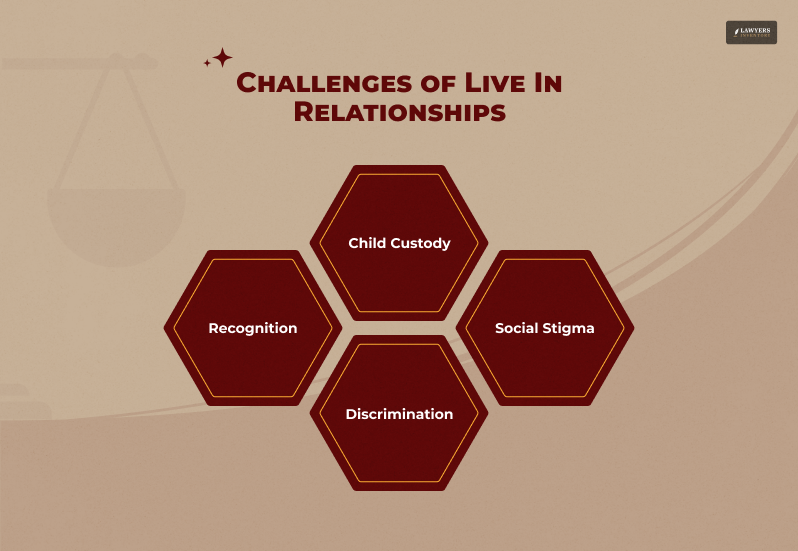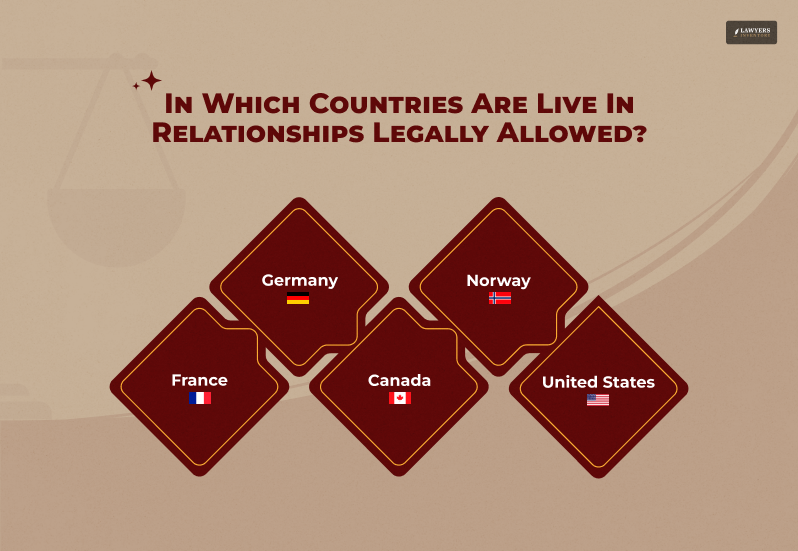
A live in relationship is a situation where two unmarried individuals of opposite or same sex live together, often without legal or religious sanction.
It’s a developing trend in India that reflects shifting attitudes and social standards. Nonetheless, there are still a lot of societal and legal obstacles to this idea. And while you might compare between live-in relationships and marriage, there is something you are missing out on.
The legal position of cohabitation is complex and constantly changing in India. Although there isn’t specific legislation that deals with them, people in such relationships may find some protection under interpreted statutes like the Domestic Violence Act and the Indian Contract Act.
The social, legal, and personal ramifications of live-in relationships make this a topic of great importance. It questions established social mores and conventions.
It calls into doubt property ownership, rights, and obligations from a legal standpoint. Additionally, it personally impacts people’s relationships, financial security, and mental health.
Historical Context: Live In Relationship Dates Back to?
In India, live-in relationships are relatively new, reflecting the nation’s changing social and cultural environment. People used to frown upon any other type of cohabitation. Moreover, they saw it as an immoral connection between a man and a woman until marriage.
In the past, society and culture considered live in relationships negative. For them, it was nothing but wicked, immoral, and dangerous to establish family norms.
Significant social stigma surrounds these kinds of partnerships. Additionally, people who opted to live together without being married were subject to prejudice and social exclusion.
However, over time, cultural perceptions about cohabitation have steadily changed. We can attribute the growing acceptability of these partnerships to factors including:
- shifting gender roles,
- economic independence,
- rising urbanization.
The necessity to address the legal and social issues related to them is becoming increasingly apparent, even though they continue to suffer obstacles and stigma in many parts of India.
You can trace the development of cohabitation in India back to the early 1930s when the country’s independence movement questioned prevailing societal mores.
As the idea of personal autonomy and choice gained popularity, marriage and family life limitations gradually loosened.
Live-in relationships became more common in post-independence due to India’s economic growth and population movement to metropolitan areas.
Women’s increasing independence, especially in terms of education and work, has challenged traditional gender roles and cultural expectations in large part.
Notwithstanding these encouraging advancements, live-in partnerships in India nevertheless confront many difficulties. Legal ambiguity, social disapproval, and prejudice continue to be major barriers for those who want to cohabitate without getting married.
Even though live-in partners now have legal recognition and protection, more work is left! We must try to bring reform to defend their rights and welfare.
The Legal Framework of Live-In Relationship

The legal framework governing live in relationships in India is complex and evolving. While no specific law directly addresses such relationships, several laws play a role.
For instance, various existing laws, such as the Indian Penal Code, the Indian Contract Act, and the Domestic Violence Act, protect individuals involved in them.
Constitutional Provisions and Relevant Laws
The IPC does not specifically recognize live-in relationships. However, it does have clauses that may be applicable in some circumstances.
For instance, cruelty committed by a husband or his family members is covered by Section 498A of the IPC. This law is applicable to both married and single couples.
Furthermore, Section 375 of the IPC determines that rape includes situations in which a woman is forced into having sex by her cohabiting partner.
Contrarily, the Indian Contract Act offers a structure for contractual agreements.
Although it doesn’t specifically address live-in partnerships, it can be important when people make agreements about money, property, or other things.
Cohabitation Agreements
Live-in partners can use these informal agreements to specify the parameters of their relationship and safeguard their legal rights.
However, these contracts may or may not be enforceable depending on the particular terms and conditions.
For instance, the Domestic Violence Act protects women against physical, emotional, and sexual abuse in the home.
Although married women are the primary target of this Act, it has also been interpreted to cover women in cohabiting partnerships. This Act offers victims of domestic abuse remedies like counseling, maintenance orders, and protective orders.
Apart from this legislation, several court rulings have contributed to elucidating the legal standing of cohabitation in India. Even though these instances have offered some direction, there is still uncertainty and room for interpretation in this area of the law.
Property Rights in Live-In Relationships
In live-in relationships, the question of property rights is especially complicated. The government has ensured that the courts assess property rights based on fundamental principles of equity and justice. There should not be any specific legislation controlling such ties.
When splitting assets following separation, the courts have often considered each partner’s contributions to the partnership, their objectives about property ownership, and the length of their cohabitation.
A well-defined legal framework is essential for resolving property rights disputes in cohabiting couples.
The courts have frequently had to create rules for property division by consulting case law and equitable principles. For those in live-in relationships, this may result in erratic results and ambiguity.
The matter of inheritance rights in cohabiting couples is another crucial factor. Suppose people in these kinds of partnerships have shared a home and developed a close bond over time. Even in that case, they might not be entitled to the same inheritance privileges as married couples.
Financial difficulties and psychological pain may result from this, especially if one partner passes away without a will.
There have been requests for India to pass legislation specifically regulating live-in relationships to solve these issues.
Legislation like this might provide precise rules for inheritance, property rights, and other issues about these kinds of relationships.
Additionally, it might lessen the ambiguity and legal conflicts that frequently occur in similar situations. India’s laws concerning cohabitation are still complex and constantly changing. However, recently, there have been some encouraging changes.
The courts have grown more tolerant of these partnerships and have given the parties involved a measure of protection. There is still a need for additional legislative changes. These will sufficiently guarantee and safeguard the rights and interests of people in live-in relationships.
Rights and Responsibilities

People in live-in relationships have some rights and duties, even if the legal status of these relationships is still developing in India.
It is crucial to remember that each live-in relationship is unique, as are the rights and obligations of the parties involved.
To learn about their rights and responsibilities, I would advise anyone considering moving in with someone to speak with a lawyer.
- Right to dignity and privacy: People who cohabitate have the right to a private life free from discrimination and to be treated decently.
- Right to maintenance and inheritance: Although people in cohabiting relationships might not automatically be entitled to maintenance as married couples are, they might be able to do so if they can demonstrate their dependency.
- Partners’ responsibilities: People in live-in relationships must treat one another with dignity, preserve good communication, and share household costs.
- Protection from domestic abuse: Under the Domestic Violence Act, those who are living together and enduring domestic abuse are entitled to seek out remedies and protection.
Challenges One Can Face

Despite the growing acceptance of live-in relationships in India, they face significant legal challenges and controversies.
India can move towards a more inclusive and equitable society by addressing these challenges and promoting greater understanding and acceptance of live-in relationships.
- Recognition of live-in relationships: There is a lack of explicit recognition of live-in relationships as a valid form of union in Indian law.
- Child custody and maintenance: Determining child custody and maintenance in cases involving live-in relationships is a complex issue with varying outcomes.
- Social stigma and discrimination: Individuals in live-in relationships often face social ostracism, discrimination, and prejudice due to societal stigma.
- Impact on individuals: Social stigma can affect relationships, employment opportunities, and well-being.
- Need for reforms: To address these challenges, there is a need for increased awareness, education, advocacy, and further legal reforms.
International Perspectives

In many Western countries, live-in relationship is a common and accepted practice. For example, in the United States and Europe, no laws govern live-in relationships, and individuals are generally free to live together without formalizing their union.
However, the legal landscape for live-in relationships can vary significantly across different countries.
In some European countries, such as France and Germany, specific laws recognize the rights and obligations of individuals in live-in relationships. These laws may address property rights, inheritance, and child custody issues.
In developing countries, the legal status of live-in relationships may be less clear. Some countries may have laws prohibiting or restricting such relationships, while others may have no laws governing them. These variations reflect different cultural, religious, and social norms.
Uttarakhand Uniform Civil Code Bill: Criminalizing Live-In Relationships?
The Uttarakhand Uniform Civil Code (UCC) Bill has sparked significant debate, particularly regarding its stance on live-in relationships.
Passed by the Uttarakhand Legislative Assembly on February 7, 2024, and approved by President Droupadi Murmu on March 13, 2024, the UCC aims to unify personal status laws for all residents, regardless of religion.
While the bill is heralded as a step toward equality, some provisions have raised concerns about individual freedoms.
One controversial aspect lies in Section 29, which officially recognizes live-in relationships but with strict conditions.
A live-in relationship is defined as a partnership “in the nature of marriage” between a man and a woman sharing a household. However, the law mandates registration of such relationships within one month, failing which the parties may face criminal penalties.
This has led to accusations of moral policing, as critics argue that imposing legal oversight on adult cohabitation infringes on personal autonomy and privacy.
Women’s rights groups and legal experts have voiced strong opposition, stating that the provision could disproportionately affect women, who often face societal stigma for unconventional lifestyle choices.
They argue that the mandatory registration not only invades personal freedom but also undermines the progressive recognition of live-in relationships by the judiciary in India, which has upheld them as valid partnerships between consenting adults.
Adding to the controversy, the law applies not only to Uttarakhand residents but also to non-residents living in the state.
This broad applicability has amplified concerns, with opponents claiming it could deter individuals from entering live-in relationships or even moving to Uttarakhand.
While the government defends the UCC as promoting equality, critics highlight that such regulations risk curtailing the hard-fought rights of women and couples, making live-in relationships a contentious issue under the new framework.
Handling Legal Issues in Live-In Relationships in India
Understanding the legal aspects of live-in relationships in India can feel overwhelming, especially with the evolving laws and societal norms.
The good news is that several types of lawyers can help you address your concerns and ensure your rights are protected.
So, who are these lawyers? Let me help you out:
1. Family Lawyers: Family lawyers are your go-to experts for legal issues related to personal relationships. They can guide you on matters like cohabitation agreements, property disputes, child custody, and inheritance rights in a live-in relationship. Their expertise ensures you understand your legal standing and can make informed decisions.
2. Civil Lawyers: Since live-in relationships often involve civil matters, like property ownership or financial agreements, civil lawyers can help. They assist in drafting and reviewing contracts or agreements that protect both partners’ interests.
3. Criminal Lawyers: If you face legal complications, such as allegations of domestic violence or breach of legal obligations, a criminal lawyer can step in. They can represent you in court and ensure that your rights are safeguarded.
4. Human Rights Lawyers: For issues related to societal stigma, discrimination, or violations of personal freedom, human rights lawyers can provide crucial support.
Live In Relationship in India: What Can India Learn
India can learn valuable lessons from other countries by examining their laws and practices regarding live-in relationships.
For example, the country could consider adopting a more explicit legal framework that recognizes and protects the rights of individuals in such relationships.
Additionally, India can benefit from the experience of other countries in addressing the social stigma associated with live-in relationships.
India can create a more accepting and inclusive society by raising awareness, promoting education, and challenging negative stereotypes.
By learning from international examples, India can develop a legal and social framework that is just and equitable for individuals in live-in relationships. This would contribute to a more progressive and inclusive society.
Read More…
- Civil Union Vs Marriage – A Best Guide
- Know All About Divorce Settlement Agreements
- 7 Scenarios You Need A Divorce Lawyer For Your Broken Marriage










0 Reply
No comments yet.